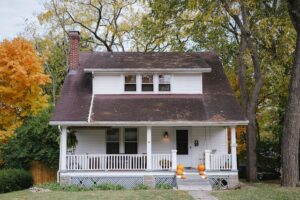Contents
- 1 Introduction
- 2 What are the different forms of the homeowner’s policy?
- 3 There are three types of coverage for homeowners insurance. Before you select a policy, consider whether you want:
- 4 Broad form (HO-2)
- 5 Special form (HO-3)
- 6 Tenant’s or condo form (HO-4/HO-6)
- 7 Takeaway: The best option for you depends on your home and circumstances.
- 8 Conclusion
Introduction
In the United States, homeowners insurance is a type of property and casualty insurance that protects against losses to your home, personal property and other structures on your property. Your policy may also cover liability for injuries or damage you cause others. The most common form of homeowners policy is called HO-3 because it contains three parts: dwelling coverage, personal property coverage and liability coverage. Each type of coverage protects different things in different ways—for example, dwelling coverage includes protection against theft or fire damage while personal property covers belongings like furniture or clothing but not electronics like laptops or cell phones (those are considered valuables). For more information on what’s covered under each section read our blog post How Much Does Homeowners Insurance Cost? Here we’ll help you understand which version of this policy might be right for you based on factors like how old your home is and whether it has been renovated since it was built.”
What are the different forms of the homeowner’s policy?
The different forms of the homeowner’s policy are:
- HO-2 (or Standard Homeowners Policy). This is the most common type of policy, and it covers the owner’s dwelling and its contents. It also covers other structures attached to the house, such as garages and patios. However, it does not cover detached structures such as sheds or pools unless they have been added onto your home.
- HO-3 (or Family Protection Plan). This policy expands coverage to include more than just your personal belongings; it also includes liability protection against lawsuits over injuries that occur at your home when someone slips on ice or falls down a flight of stairs. The HO-3 may be more expensive than a standard homeowners’ plan because it offers additional coverage options beyond what is covered by a regular policy. You should consider purchasing this type of insurance if you are concerned about being sued for negligence in connection with an accident that occurs on your property or while you’re visiting someone else’s property (for example, if someone trips over something protruding from their lawn into yours).
There are three types of coverage for homeowners insurance. Before you select a policy, consider whether you want:
There are three types of coverage for homeowners insurance. Before you select a policy, consider whether you want:
- Broad form (HO-2). This type of policy covers all structures on your property and the personal belongings inside them. It also pays to repair or replace losses to your home that are not caused by a named peril, such as fire or wind damage.
- Special form (HO-3). This type of policy includes broader coverage than the broad form, but excludes certain perils such as earthquakes and floods. You may need this type if you live in an area where those natural disasters are prevalent and want additional protection against them.
- Tenant’s or condo form (HO-4/HO-6). If you’re renting out space in your home—to renters who pay their own electricity bills, for example—that space would be considered separate from yours and fall under its own insurance policy known as tenant’s insurance (or condo unit owners association insurance).
Broad form (HO-2)
The broad homeowner’s policy (HO-2) covers your main dwelling and the land it sits on, as well as any other structures (such as a detached garage or shed) that are attached to the house. The HO-2 also covers personal property inside and outside the home, including your possessions in storage units. In addition to covering damage from fire and lightning strikes, this policy provides personal liability protection for injuries to others caused by you or someone living under your care while they are on your property. It also covers loss of use due to damage to your house or its contents, as well as coverage for repairs needed after a disaster such as flooding or earthquake that damages part of a building but doesn’t destroy it entirely (known in insurance jargon as “partial destruction”). One more benefit: if an earthquake causes substantial structural damage but doesn’t destroy your home entirely (a so-called “collapse”), insurance companies often pay enough money toward rebuilding costs so that homeowners can replace damaged structures with new ones instead of repairing them—but only if their policies specifically cover partial destruction! Finally, many policies will reimburse owners for lost income resulting from damage suffered during disasters such as floods—meaning that if you’re unable to work due to flooding at work sites or locations where employees would normally go during normal business hours before closing down operations completely due through no fault whatsoever on anyone’s behalf except perhaps Mother Nature herself then maybe consider getting some kinder climate change laws passed so we won’t have these problems anymore?
Special form (HO-3)
The HO-3 is the most common homeowner’s policy. It covers your home, its contents and other structures on your property. If you’re concerned about a special situation or want a policy with specific features, you may want to consider another form of coverage. For example:
- If you have a swimming pool that requires regular maintenance, consider getting a special form (HO-3) that includes an optional endorsement for swimming pool coverage. This will protect against accidents and damage caused by natural disasters like floods and earthquakes.
- If your home is located in a flood zone but doesn’t have adequate drainage or storm sewers, ask about an additional endorsement for flood insurance coverage at extra cost.
Tenant’s or condo form (HO-4/HO-6)
The tenant’s or condo form of the policy is for those who rent their home. It covers personal property and medical payments for an injured guest. The HO-4/HO-6 is less expensive than a broad policy, but you’ll need to fill out information about every person who lives in your house or condominium unit.
This means that if you want to add someone to your policy, be sure they’re not there when you fill out the paperwork!
Takeaway: The best option for you depends on your home and circumstances.
If you’re wondering what form of coverage to choose, here are some things to keep in mind:
- HO-2 is the most common form of coverage and covers your home, personal possessions and liability.
- HO-3 is a special form that covers your home, personal possessions and liability in addition to other structures on your property like fences or sheds.
- HO-4/HO-6 are for tenants and condo owners respectively. They provide similar protection to an HO-2 policy but include additional coverage options such as loss of use (which reimburses you for paying rent while damaged) or other expenses related to damage caused by a covered risk (e.g., hotel bills after a fire).
Conclusion
We hope that this article has helped you understand the different types of homeowner’s insurance available. If you’re still not sure which one is right for you, talk to an expert at your local Farmers agent. They’ll answer all your questions and help get the coverage you need at an affordable price.



Average Rating